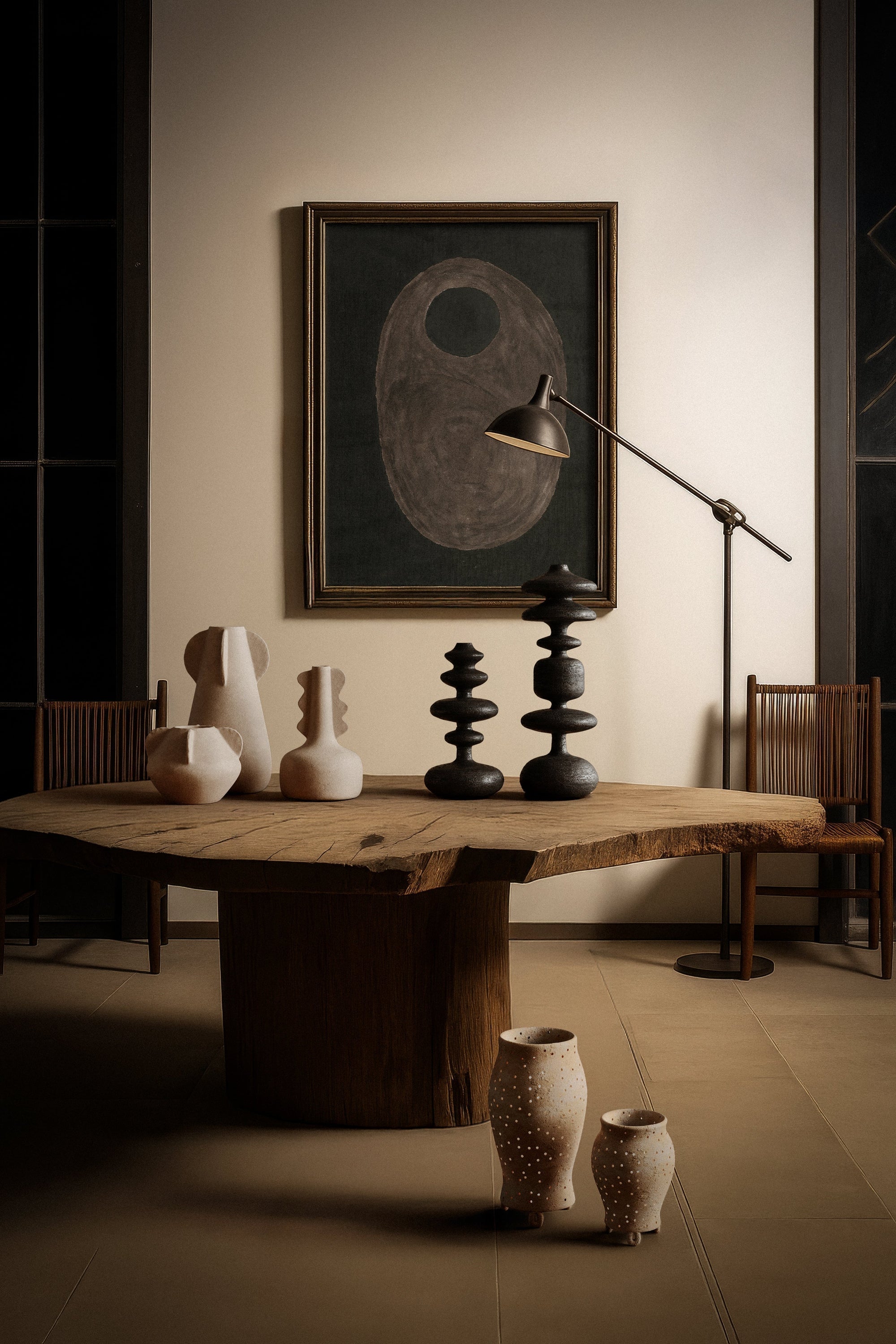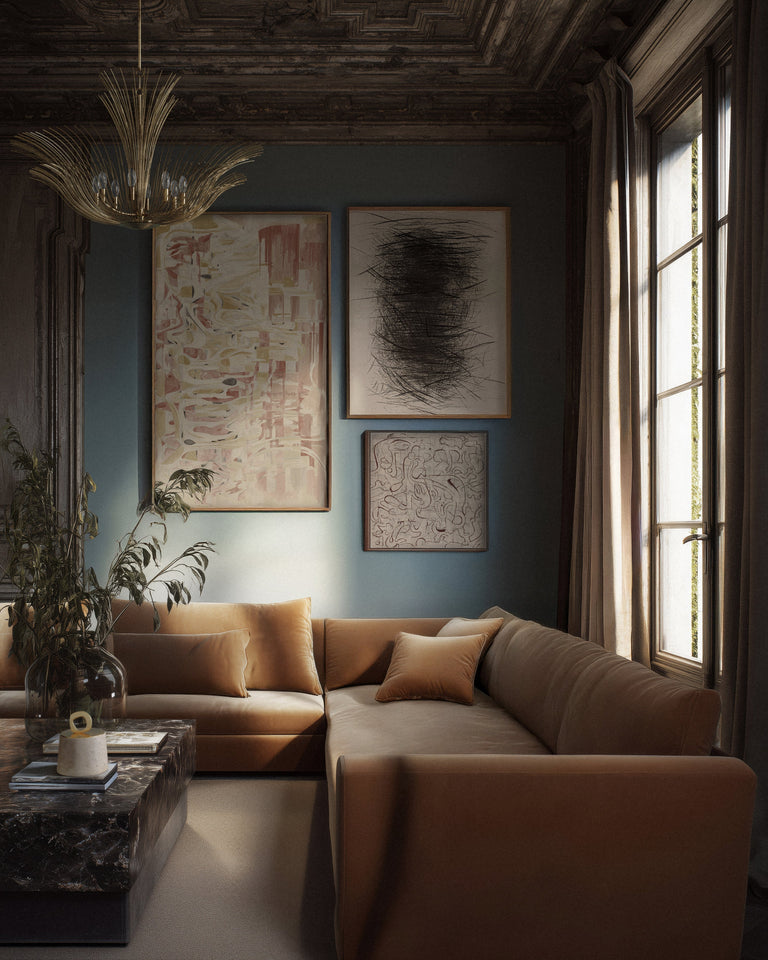
Brancusi's Legacy in Contemporary Atelier Practice
In the narrow streets of Montparnasse, where cobblestones still bear the memory of countless artists' footsteps, Constantin Brancusi's legendary atelier stood as a temple to the essential. Here, among towers of plaster and marble dust suspended in shafts of Parisian light, the Romanian sculptor pursued something radical: the distillation of form to its purest essence.
Brancusi understood what few before him had grasped: form itself constitutes a universal language, an eternal dialogue between proportion, texture, and light that speaks across centuries and cultures. In his hands, marble became liquid poetry, bronze transformed into captured breath, and the space between forms grew as significant as the sculptures themselves.

Photo courtesy of Centre Pompidou
The Atelier as Sacred Space
The Parisian atelier tradition, which reached its apotheosis in Brancusi's practice, represents more than mere workspace, it embodies a philosophy of making that honors both material and void. These sanctuaries of creation, tucked into the courtyards and upper floors of the Left Bank, became laboratories where artists could engage in the slow, meditative process of revealing what already existed within stone and metal.
Brancusi's atelier, now preserved at the Centre Pompidou, reveals the sculptor's profound understanding of objects in dialogue. Each piece was positioned with meticulous care, creating conversations between forms that shifted with the changing light. The studio became a living exhibition, where sculptures were never truly finished but existed in perpetual evolution, their meanings deepening through relationship and time.
The Grammar of Essential Form
What set Brancusi apart was his recognition that reduction need not mean simplification. His "Bird in Space" series, those soaring bronze forms that seem to capture flight itself, resulted from years of paring away the unnecessary to reveal the inevitable. Each curve, each surface, each point where material meets air was considered with the devotion of a monk illuminating manuscripts.

Bird in Space, Photo Courtesy of the Met
The sculptor's influence extended far beyond the boundaries of sculpture itself. His understanding that objects possess an inherent life. They breathe, relate, and transform space around them, laying the groundwork for how we understand decorative objects today. The finest contemporary pieces carry this DNA, embodying Brancusi's insight that form, when true to itself, becomes a vessel for something larger.
Light as Collaborator
Perhaps nowhere was Brancusi's genius more evident than in his understanding of light as an active participant in his work. The sculptor positioned pieces throughout his atelier to capture specific qualities of illumination. Morning light revealed the subtle undulations of a surface and afternoon shadows emphasized the bold geometry of an edge.
This partnership with light transformed static objects into dynamic presences. A sculpture might appear contemplative in dawn's soft glow, then reveal hidden strength as midday sun carved sharp definitions across its surface. Brancusi taught us that great objects orchestrate space, directing attention, creating rhythms, establishing the very atmosphere of inhabited rooms.
The Enduring Legacy
Today's most discerning ateliers continue this conversation, creating objects that honor Brancusi's essential insights while speaking to contemporary sensibilities. These makers understand that authentic decorative objects must possess the same integrity the master sculptor demanded of his monuments. Each piece justified by its form, enriched by its material, and completed by its relationship to light and space.
The tradition persists in workshops from Paris to Provence, where artisans shape clay, carve stone, and cast bronze with the same reverence for essential form that guided Brancusi's hand. Their work carries forward his understanding that objects, when conceived with proper attention to proportion and material truth, become an enrichment to daily life.
Contemporary Expressions of Eternal Principles
In our own collection, we find echoes of Brancusi's profound understanding of form as a universal language. Contemporary ateliers, working within this distinguished lineage, continue to explore the interplay of proportion, texture, and light that transcends temporal boundaries.
The Moreau Vase and Anouar Collection evoke the sensual minimalism of Brancusi's ovoid forms, their surfaces inviting touch and reflection. The La Structure Sculptures and Imane Organic Sculpture capture movement mid-gesture
In the Romain Totems and Époque Mirrors, geometry and negative space become atmosphere itself, while the Caillou and Bocal Lidded Pots offer tactile containment in travertine and marble, materials shaped over millennia.
Together, these pieces speak the silent language Brancusi perfected in his Montparnasse sanctuary: form as poetry, material as meaning, light as the eternal collaborator in the ongoing dialogue between object and observer.
Discover our complete collection of atelier-crafted sculptural objects, where the eternal principles of essential form meet contemporary artisan mastery. Each piece represents our commitment to objects that serve not merely as decoration, but as vessels of quiet expression in the grand tradition of Parisian ateliers.
Recent Edits






